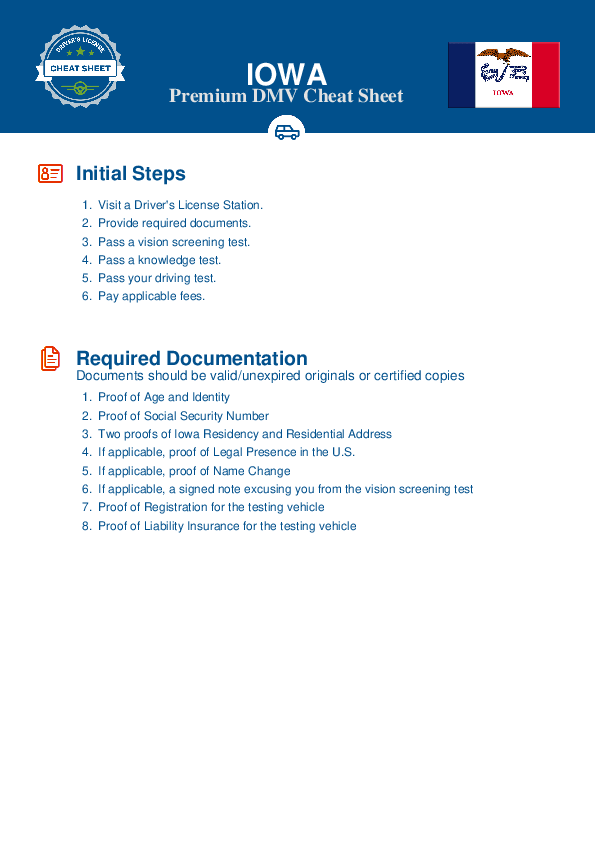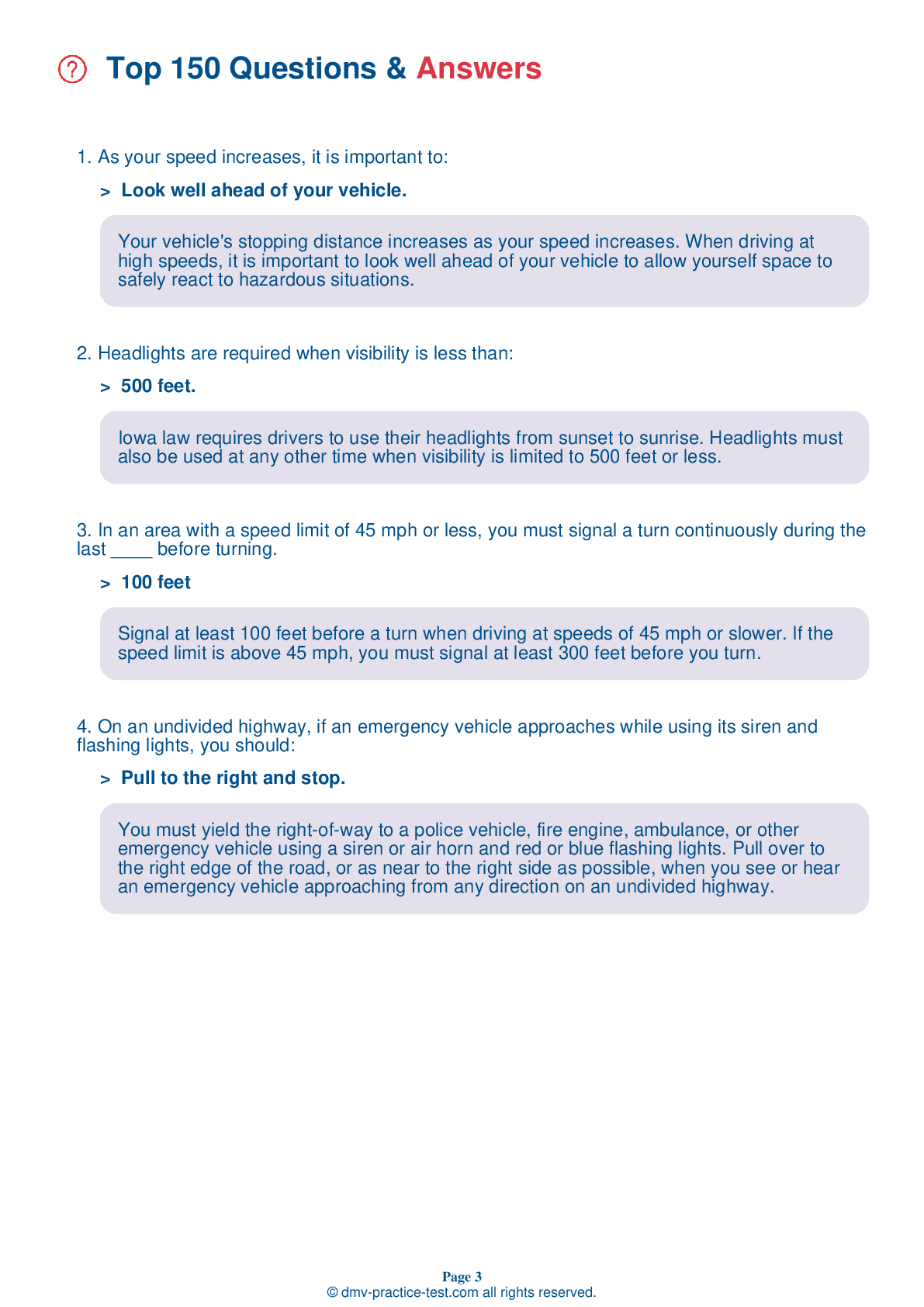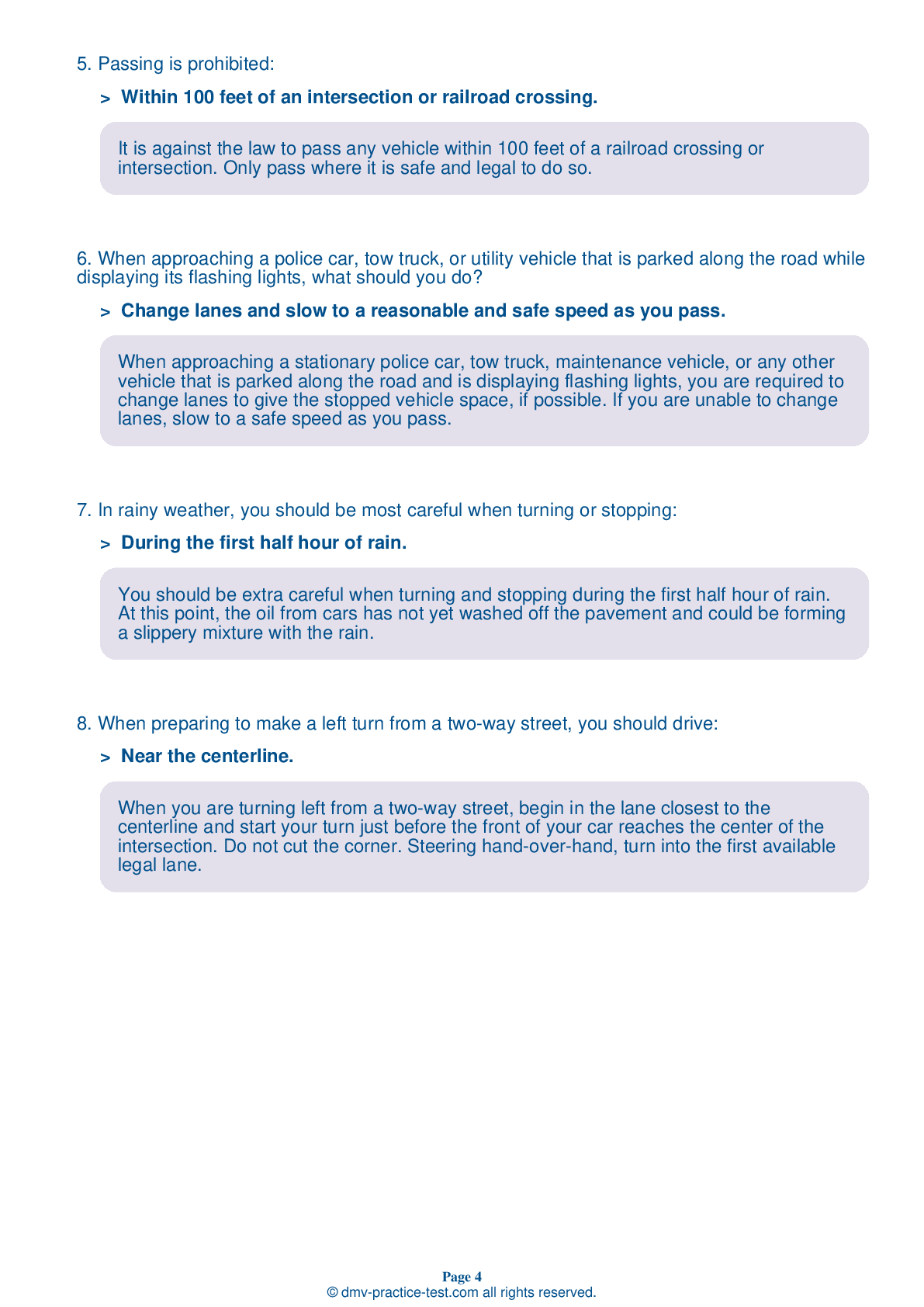FREE Iowa DMV Practice Test #1
The DMV practise tests in Iowa have been updated for January 2025. It comprises questions based on the most important traffic signals and legislation for 2025 from the Iowa Driver Handbook. To study for the DMV driving permit test and driver's licence exam, use actual questions that are very similar (often identical!) to the DMV driving permit test and driver's licence exam.
Each question on the practise exam has a tip and explanation to help you recall the ideas. Questions about traffic rules, traffic signs, and driving statutes, as well as information from the Driver Handbook, will be included in the written portion of the official Iowa DMV test.
You must properly answer 28 of the 35 questions to receive a passing mark. To help you prepare for your Iowa instruction permit or driver's licence, take our DMV practise test.
The DMV exam is offered in a variety of languages.
Using any form of testing help will result in an automatic fail, and the DMV may take further action against your driver's licence, so avoid it.
1 . Pennant-shaped signs indicate:
Pennant-shaped signs usually indicate no passing zones. Text will also be on the sign to confirm that it is a no passing zone.
2 . To check your blind spot when changing lanes to the left, you should glance:
To check your blind spot, glance over your shoulder in the direction that you want to move.
3 . You do not have to stop for a school bus that is stopped with its red lights flashing if it is on a private road.
When a school bus is stopped with its red lights flashing and stop arm out, other drivers are required to stop. This law applies to drivers traveling on both public and private roads.
4 . When approaching an uncontrolled intersection, a driver should:
At an intersection where there is no stop sign or traffic signal, you should yield to a vehicle approaching the intersection from the right. However, always be prepared to yield to avoid a crash. Do this by taking your foot off the accelerator, covering the brake, and looking left, right, and left again.
5 . While backing, you should:
When intending to back up, always check behind your vehicle before getting in. Children and small objects are difficult to see from the driver’s seat. While backing, turn your head so you can see through the rear window. Do not depend only on your mirrors or sensors.
6 . This road sign means:
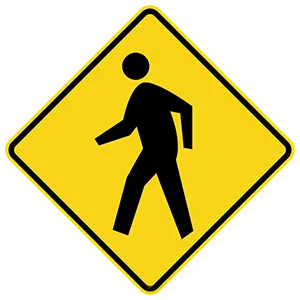
Warning signs are usually yellow with black markings. This sign indicates the presence of a crosswalk, regardless of if it is marked on the pavement or not. Upon seeing this sign, you should be alert and allow any pedestrians to cross the road safely.
7 . If two drivers arrive at the same time to a four-way intersection controlled by stop signs:
Yield the right-of-way to the driver on your right at a four-way intersection if you both arrive to the intersection at the same time. You may then proceed when it is safe to do so.
8 . This road sign means:
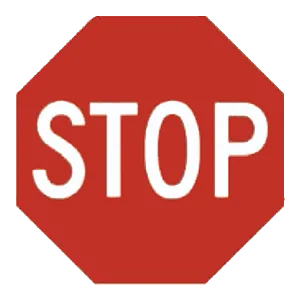
The stop sign is the only eight-sided sign you will see on any roadway. When you encounter a stop sign, you must come to a complete stop. You may not proceed until the way is clear for you to completely and safely pass through the intersection.
Need Car Insurance? No problem!
Compare the best rates in Iowa and find a personalized policy that meets your needs.
1. Are You Currently insured ?
2. Married ?
3. Do you own your Home?
4. Do you have more than 1 car ?
5. Have you or a Family Member Honorably Served in U.S. Military ?
6. Your Name
7. Age
8. Zip code
IMPORTANT REMINDER:Auto Insurance is Mandatory to drive in Iowa. Get covered before you hit the road to avoid any fines.
Ranked by best match
